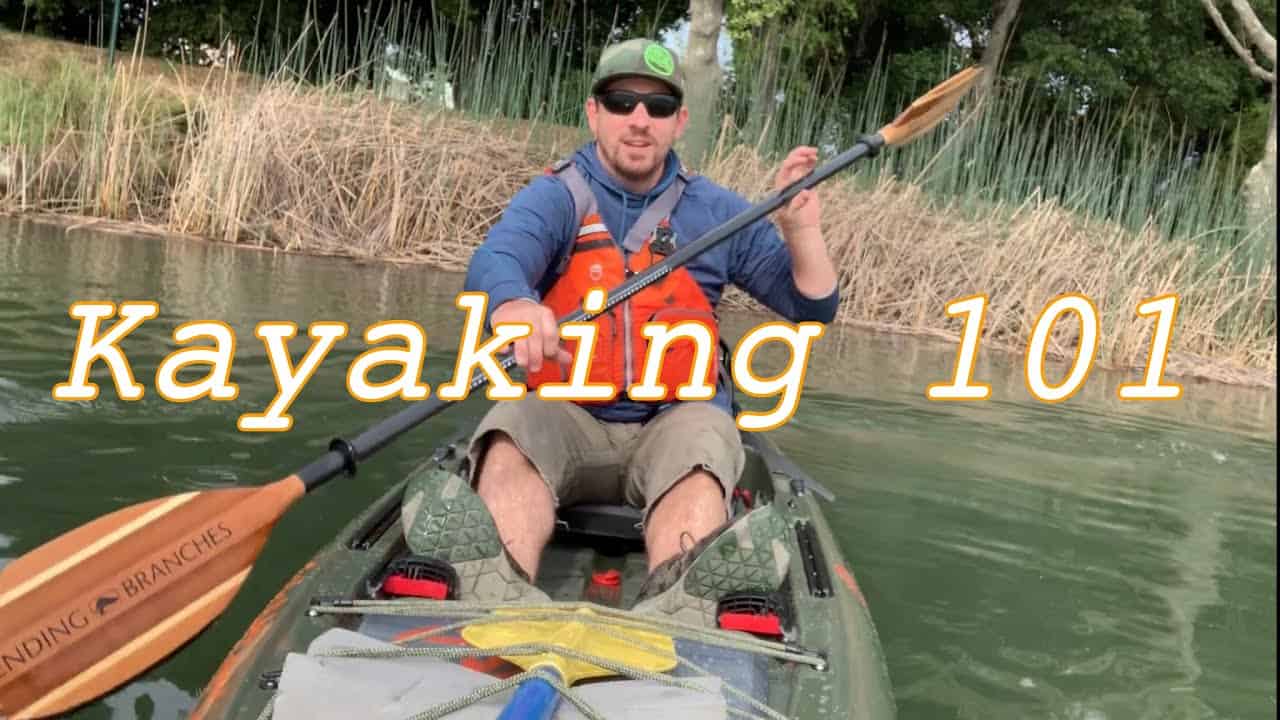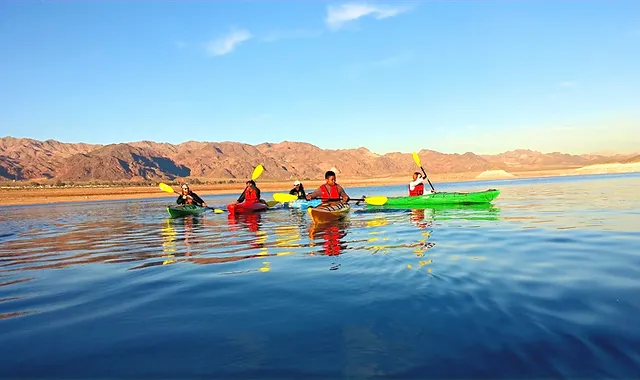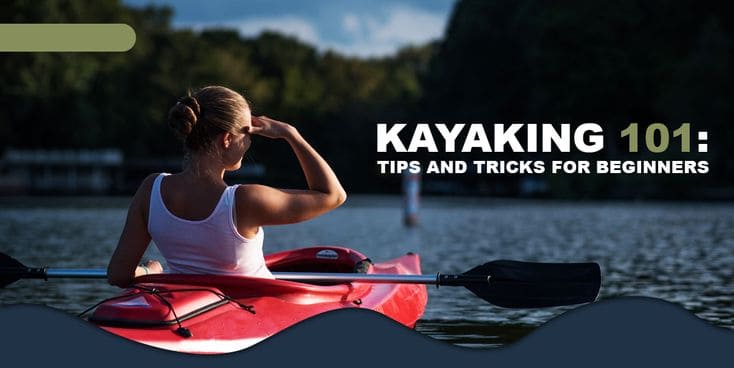Kayaking is a popular recreational activity that allows individuals to explore the beauty of nature while enjoying a thrilling and adventurous experience. Whether you are paddling through calm lakes, navigating through rushing rivers, or exploring the coastal areas, kayaking offers a unique way to connect with the outdoors.
Not only is kayaking a fun and exciting activity, but it also provides numerous physical and mental health benefits. Additionally, it is crucial to prioritize safety by using proper gear and following safety measures.
Kayaking offers a wide range of physical and mental health benefits. It is an excellent form of exercise that engages the entire body, providing a full-body workout. Paddling helps to strengthen the muscles in the arms, shoulders, back, and core. It also improves cardiovascular fitness and endurance. Furthermore, kayaking is a low-impact activity that puts minimal stress on the joints, making it suitable for individuals of all ages and fitness levels.
In addition to the physical benefits, kayaking also has positive effects on mental health. Being out in nature and surrounded by water can have a calming and soothing effect on the mind. Kayaking allows individuals to disconnect from the stresses of daily life and immerse themselves in the present moment. The rhythmic motion of paddling can be meditative and help reduce anxiety and stress. Moreover, spending time in nature has been shown to improve mood and overall well-being.
To ensure a safe and enjoyable kayaking experience, it is essential to have the proper gear and follow safety measures. The most important piece of gear for kayaking is a life jacket or personal flotation device (PFD). A PFD should be worn at all times while on the water, as it can save your life in case of an accident or capsize. It is crucial to choose a PFD that fits properly and is approved by the appropriate regulatory bodies.
Essential Gear for Kayaking
1. Life jacket or personal flotation device (PFD): A PFD is the most critical piece of gear for kayaking. It keeps you afloat in case of an accident or capsize and should be worn at all times while on the water. Choose a PFD that fits properly and is approved by the appropriate regulatory bodies.
2. Kayak paddle: A kayak paddle is used to propel the kayak through the water. It is essential to choose a paddle that is the right length and weight for your height and paddling style. Paddles are typically made from materials such as wood, aluminum, fiberglass, or carbon fiber.
3. Kayak: The kayak itself is another essential piece of gear. There are various types of kayaks available, including sit-on-top kayaks, sit-in kayaks, inflatable kayaks, whitewater kayaks, touring kayaks, and fishing kayaks. Each type of kayak is designed for specific purposes and environments.
4. Spray skirt: A spray skirt is used to keep water out of the cockpit of a sit-in kayak. It forms a watertight seal around your waist and the cockpit rim, preventing water from entering the kayak.
5. Helmet (for whitewater kayaking): If you plan on kayaking in whitewater rapids, it is essential to wear a helmet to protect your head from potential impacts with rocks or other obstacles.
6. Dry bag: A dry bag is used to keep your belongings dry while kayaking. It is typically made from waterproof materials and has a roll-top closure to create a watertight seal.
7. First aid kit: It is always a good idea to carry a basic first aid kit with you while kayaking. It should include items such as bandages, antiseptic ointment, adhesive tape, pain relievers, and any necessary medications.
Types of Kayaks
1. Sit-on-top kayaks: Sit-on-top kayaks are popular for recreational paddling and are suitable for beginners. They have an open cockpit design, which makes them easy to get in and out of. Sit-on-top kayaks are stable and offer a great platform for fishing or leisurely paddling.
2. Sit-in kayaks: Sit-in kayaks have an enclosed cockpit, with the paddler sitting inside the kayak. They provide more protection from the elements and are suitable for colder water conditions. Sit-in kayaks are versatile and can be used for various activities, including touring, fishing, and whitewater paddling.
3. Inflatable kayaks: Inflatable kayaks are lightweight and portable, making them ideal for individuals who don’t have space to store a traditional kayak. They are made from durable materials and can be inflated and deflated for easy transport.
4. Whitewater kayaks: Whitewater kayaks are designed specifically for navigating fast-moving rivers and rapids. They are shorter and more maneuverable than other types of kayaks, with a rounded hull and rocker to handle the turbulent water.
5. Touring kayaks: Touring kayaks are designed for long-distance paddling and exploring. They have a sleek and narrow design, which allows them to glide through the water with ease. Touring kayaks often have storage compartments for overnight trips.
6. Fishing kayaks: Fishing kayaks are specially designed for anglers. They have features such as rod holders, storage compartments, and stability for casting and reeling in fish. Fishing kayaks can be sit-on-top or sit-in style.
Kayak Paddles
The paddle is one of the most important pieces of gear for kayaking, as it is used to propel the kayak through the water. There are several factors to consider when choosing a kayak paddle:
1. Materials: Kayak paddles can be made from various materials, including wood, aluminum, fiberglass, and carbon fiber. Each material has its own advantages and disadvantages. Wood paddles are aesthetically pleasing and have a natural feel, but they can be heavier and require more maintenance. Aluminum paddles are durable and affordable but can be heavier. Fiberglass paddles are lightweight and offer a good balance between durability and performance. Carbon fiber paddles are the lightest and most high-performance but also the most expensive.
2. Blade shape and size: The shape and size of the paddle blade can affect your paddling efficiency and stroke technique. Larger blades provide more power but require more effort to paddle. Smaller blades are easier to paddle but may not provide as much power. The shape of the blade can also affect how it moves through the water.
3. Shaft length and diameter: The length and diameter of the paddle shaft should be chosen based on your height, paddling style, and kayak width. A longer shaft is needed for taller individuals or wider kayaks, while a shorter shaft is suitable for shorter individuals or narrower kayaks. The diameter of the shaft should be comfortable to grip.
4. Feathering: Feathering refers to the angle at which the two blades of the paddle are offset from each other. Feathered paddles reduce wind resistance when paddling, making it easier to paddle in windy conditions. Some paddles have adjustable feathering angles, allowing you to customize it to your preference.
Safety Equipment for Kayaking
Safety should always be a top priority when kayaking. In addition to wearing a PFD, there are several other pieces of safety equipment that you should have with you:
1. Whistle: A whistle is an essential safety device that can be used to attract attention in case of an emergency or to communicate with other kayakers.
2. Flares: Flares are used to signal for help in case of an emergency or to alert other boaters of your presence. They should be stored in a waterproof container and checked regularly to ensure they are still in working condition.
3. Bilge pump: A bilge pump is used to remove water from the cockpit of a sit-in kayak. It is essential to have a bilge pump with you in case your kayak capsizes or takes on water.
4. Navigation tools: Depending on the type of kayaking you plan to do, you may need navigation tools such as a compass or GPS device to help you navigate and stay on course.
5. Emergency communication device: It is a good idea to have an emergency communication device with you, such as a VHF radio or cell phone, in case you need to call for help.
Clothing for Kayaking
Choosing the right clothing for kayaking is important to ensure comfort and protection from the elements. Here are some clothing items to consider:
1. Quick-drying and moisture-wicking fabrics: It is best to wear clothing made from quick-drying and moisture-wicking fabrics, such as nylon or polyester. These fabrics help to wick away sweat and keep you dry and comfortable while paddling.
2. Sun protection: When kayaking, it is important to protect yourself from the sun’s harmful rays. Wear a hat with a wide brim to shade your face and neck, sunglasses to protect your eyes, and apply sunscreen to exposed skin.
3. Wetsuit or drysuit: Depending on the water temperature, you may need to wear a wetsuit or drysuit for added insulation and protection from cold water. A wetsuit is suitable for milder temperatures, while a drysuit is necessary for colder conditions.
4. Footwear: Choose footwear that is suitable for kayaking, such as water shoes, sandals, or neoprene booties. Avoid wearing cotton socks, as they can become wet and uncomfortable.
Kayak Storage and Transportation
Proper storage and transportation of your kayak are essential to keep it in good condition and ensure safe and easy transport. Here are some tips for kayak storage and transportation:
1. Roof racks: If you have a vehicle with roof racks, you can use them to secure your kayak for transport. Make sure to use straps or tie-downs to secure the kayak tightly to the roof racks.
2. Kayak trailers: If you have multiple kayaks or a larger kayak that is difficult to transport on a roof rack, you may consider using a kayak trailer. Kayak trailers are designed specifically for transporting kayaks and can make loading and unloading easier.
3. Storage racks: When not in use, it is important to store your kayak properly to protect it from damage. Use storage racks or stands to keep the kayak off the ground and prevent warping or deformation.
4. Straps and tie-downs: When securing your kayak for transport, use straps or tie-downs that are specifically designed for kayaks. Make sure they are tight and secure to prevent the kayak from shifting or coming loose during transport.
5. Loading and unloading tips: When loading and unloading your kayak, it is important to lift with your legs and not your back to avoid injury. Use proper lifting techniques and ask for assistance if needed.
Kayaking Accessories
In addition to the essential gear, there are several accessories that can enhance your kayaking experience:
1. Kayak cart: A kayak cart is a small wheeled device that allows you to easily transport your kayak from your vehicle to the water’s edge. It can be especially useful if you have a heavy or bulky kayak.
2. Paddle leash: A paddle leash is a cord that attaches your paddle to your kayak, preventing it from floating away if you drop it in the water.
3. Kayak anchor: A kayak anchor is used to keep your kayak in place when fishing or taking a break. It can be especially useful in windy or current conditions.
4. Kayak seat cushion: A kayak seat cushion can provide added comfort and support during long paddling trips. Look for a cushion that is designed specifically for kayaking and provides good back support.
5. Dry box: A dry box is a waterproof container that can be used to store small items such as keys, wallets, and cell phones. It keeps your belongings dry and protected while on the water.
6. GoPro camera: If you want to capture your kayaking adventures, a GoPro camera is a great accessory to have. It is small, lightweight, and waterproof, making it perfect for capturing action shots and videos.
Kayaking Locations
Kayaking can be enjoyed in various types of environments, each offering its own unique experience. Here are some popular kayaking locations:
1. Rivers: Kayaking on rivers allows you to navigate through scenic landscapes and experience the thrill of whitewater rapids. There are rivers suitable for all skill levels, from calm and gentle streams to challenging whitewater runs.
2. Lakes: Lakes provide a peaceful and serene environment for kayaking. They are often calm and offer beautiful views of the surrounding landscape. Lakes are suitable for leisurely paddling, fishing, or exploring.
3. Coastal areas: Kayaking along the coast allows you to explore rugged shorelines, sea caves, and marine wildlife. Coastal kayaking can range from calm and protected bays to more challenging open water conditions.
4. National parks: Many national parks have lakes, rivers, or coastal areas that are perfect for kayaking. These locations often offer stunning natural scenery and opportunities for wildlife viewing.
5. Local waterways: Even if you don’t have access to large bodies of water, there are often local rivers, lakes, or ponds that are suitable for kayaking. Check with your local parks and recreation department for information on nearby kayaking spots.
When choosing a kayaking location, it is important to consider the specific requirements and challenges of each environment. Factors such as water conditions, weather, tides, and wildlife should be taken into account to ensure a safe and enjoyable experience.
Kayaking with Kids
Kayaking can be a fun and rewarding activity for children. However, it is important to take extra precautions and follow safety guidelines when kayaking with kids. Here are some tips for kayaking with children:
1. Safety tips for children: Make sure your child wears a properly fitting PFD at all times while on the water. Teach them basic paddling and safety techniques, such as how to hold a paddle correctly and what to do in case of a capsize. Always supervise children closely while kayaking and stay within their comfort and skill level.
2. Choosing the right kayak and gear for kids: It is important to choose a kayak that is suitable for your child’s size, age, and skill level. Look for kayaks specifically designed for children, which are smaller and more stable. Ensure that the PFD fits properly and is approved for children.
3. Fun activities to do while kayaking with kids: Make kayaking enjoyable for children by incorporating fun activities into the experience. Play games such as “I Spy” or “Paddle Tag” to keep them engaged and entertained. Take breaks to explore the shoreline, look for wildlife, or have a picnic on a nearby beach. Encourage them to bring along a camera or binoculars to capture any interesting sights they come across. Another fun activity is to create a scavenger hunt, where they have to find specific objects or spot certain types of birds or fish. Additionally, you can teach them about the environment and conservation by discussing the importance of keeping the water clean and respecting wildlife habitats. Overall, the key is to make kayaking a fun and educational experience for children, allowing them to connect with nature while enjoying themselves.





